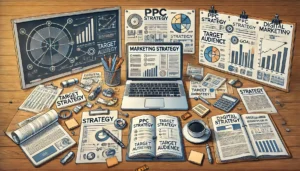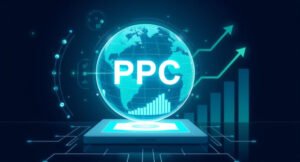- 1. Introduction to PPC Landing Page Optimization
- 2. Understanding the Importance of PPC Landing Pages
- 3. Key Elements of a High-Converting Landing Page
- 4. Creating a Clear and Compelling Headline
- 5. Crafting Persuasive and Concise Copy
- 6. Using High-Quality Visuals to Enhance Engagement
- 7. Optimizing Call-to-Action (CTA) for Maximum Clicks
- 8. Reducing Page Load Time and Improving Speed
- 9. Ensuring Mobile-Friendliness for Better Conversions
- 10. Using Trust Signals to Build Credibility
- 11. A/B Testing and Data-Driven Optimization
- 12. The Role of SEO in PPC Landing Page Success
- 13. Analyzing User Behavior with Heatmaps and Analytics
- 14. Common Mistakes to Avoid in PPC Landing Page Optimization
- 15. Conclusion and Final Tips for Success
1. Introduction to PPC Landing Page Optimization
Imagine this: You’ve just launched a PPC campaign, and the clicks are pouring in. But instead of converting, visitors are bouncing off your page without taking action. Frustrating, right? The truth is, even the most compelling ads can fall flat without a landing page that’s designed to convert. In this guide, we’ll show you how to transform your landing pages into high-performing conversion machines, so you can turn clicks into customers and get the most out of your PPC investment. Let’s dive in!
2. Understanding the Importance of PPC Landing Pages
A PPC landing page is a special page made for a marketing campaign. It differs from regular web pages. Its focus is on capturing leads or boosting sales with a single goal. By optimizing these pages, we guide visitors to take action. This could be filling out a form, buying a product, or signing up for a service.
3. Key Elements of a High-Converting Landing Page
A successful PPC landing page includes several key elements:
- Compelling headlines that capture attention.
- Concise and persuasive copy that highlights the benefits.
- Strong call-to-action (CTA) to encourage conversions.
- Visual elements that engage and build trust.
- Fast load times prevent visitors from leaving.
- Mobile optimization for a seamless user experience.
4. Creating a Clear and Compelling Headline
The headline is the first thing visitors see. It is key to grabbing their attention. A good headline should:
- Be clear and concise.
- Highlight a unique selling proposition (USP).
- Evoke curiosity or urgency.
For example, instead of “Get Fit with Our Program,” try “Lose 10 Pounds in 30 Days – Guaranteed!”
5. Crafting Persuasive and Concise Copy
The copy on your landing page should be:
- Benefit-driven – Focus on how the product or service helps the customer.
- Easy to read – Use bullet points and short paragraphs.
- Action-oriented – Guide users toward taking the next step.
“Unlock lightning-fast results—three times quicker and more accurate with machine learning!”
6. Using High-Quality Visuals to Enhance Engagement
Visual content, including images, videos, and graphics, enhances user experience and increases conversions. Best practices include:
- Using high-resolution images relevant to the offer.
- Adding explainer videos to show product benefits.
- Including infographics to present key information visually.
7. Optimizing Call-to-Action (CTA) for Maximum Clicks
Your CTA should be prominent, compelling, and action-driven.
- Use contrasting colors to make the button stand out.
- Write action-oriented text like “Get Your Free Trial Now” instead of “Submit.”
- Place CTAs above the fold and repeat them strategically on the page.
8. Reducing Page Load Time and Improving Speed
A slow landing page can kill conversions. To improve speed:
- Optimize images and videos.
- Use a reliable hosting service.
- Minimize HTTP requests.
- Enable browser caching.
Tools like Google PageSpeed Insights can help analyze and improve page load times.
9. Ensuring Mobile-Friendliness for Better Conversions
Most PPC traffic comes from mobile devices. So, your landing page must be **mobile-optimized**.
- Use a responsive design that adapts to different screen sizes.
- Ensure buttons and forms are easy to click on mobile.
- Test the page on various devices and browsers for a seamless experience.
10. Using Trust Signals to Build Credibility
Visitors are more likely to convert when they trust your brand. Add:
- Customer testimonials and case studies.
- Trust badges (e.g., SSL certificates, money-back guarantees).
- Social proof like user reviews and endorsements.
11. A/B Testing and Data-Driven Optimization
A/B testing means creating two versions of your landing page to see which one performs better. You can experiment with:
- Different headlines and CTAs.
- Page layouts and color schemes.
- Form fields and button placements.
Tools like Google Optimize and Unbounce can help conduct A/B tests effectively.
12. The Role of SEO in PPC Landing Page Success
PPC and SEO are separate strategies. But, using SEO best practices can improve PPC performance.
- Use relevant keywords in the page copy.
- Optimize meta tags and descriptions.
- Ensure a clean URL structure.
- Improve internal linking for better navigation.
13. Analyzing User Behavior with Heatmaps and Analytics
Heatmaps and analytics tools show how users interact with your landing page.
- Google Analytics tracks conversion rates and user behavior.
- Hotjar and Crazy Egg show heatmaps and user clicks.
- Use session recordings to identify friction points in the user journey.
14. Common Mistakes to Avoid in PPC Landing Page Optimization
Some common errors that hurt conversions include:
- Too much text – Keep it concise.
- Weak CTA – Make it clear and compelling.
- Slow page load times – Optimize speed.
- No social proof – Add trust signals.
- Poor mobile experience – Ensure responsiveness.
15. Conclusion and Final Tips for Success
Optimizing your landing page for PPC conversions requires a strategic approach. Focus on:
- Clear messaging that aligns with your ad.
- Strong visuals and trust elements to build credibility.
- Fast-loading, mobile-friendly pages for better user experience.
- A/B testing and analytics to continually improve performance.
These strategies will help you get the most from your PPC ads and boost conversions.




